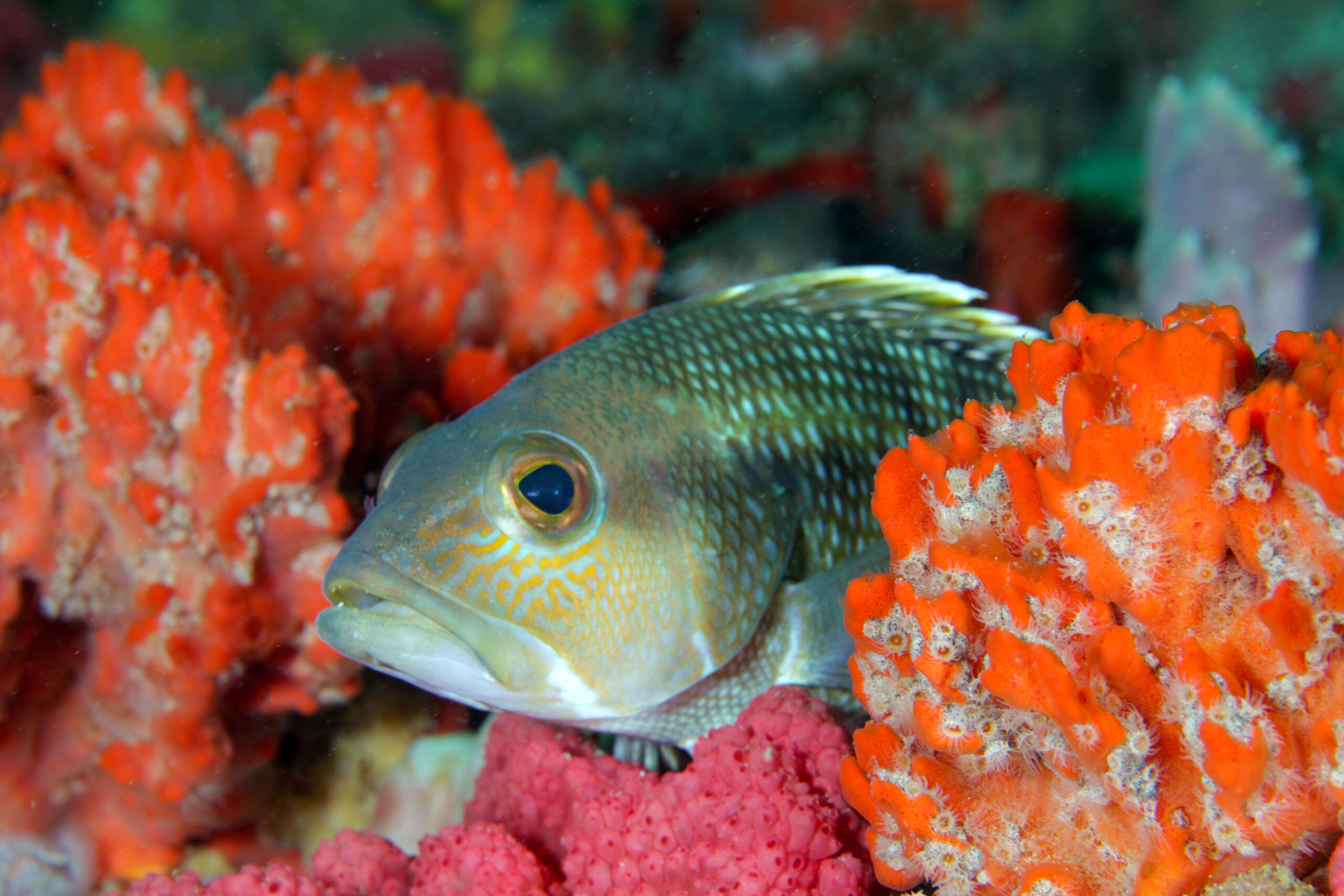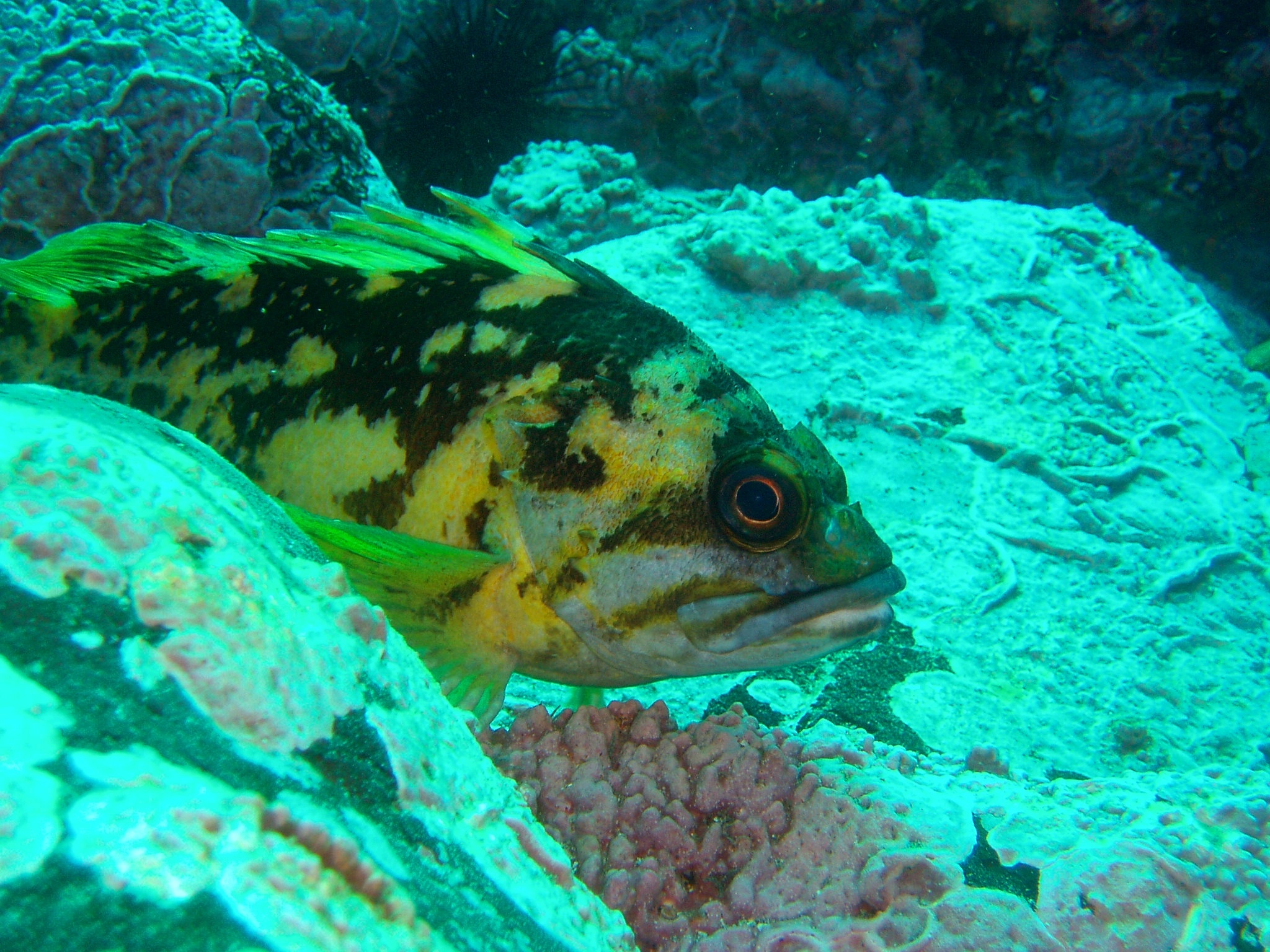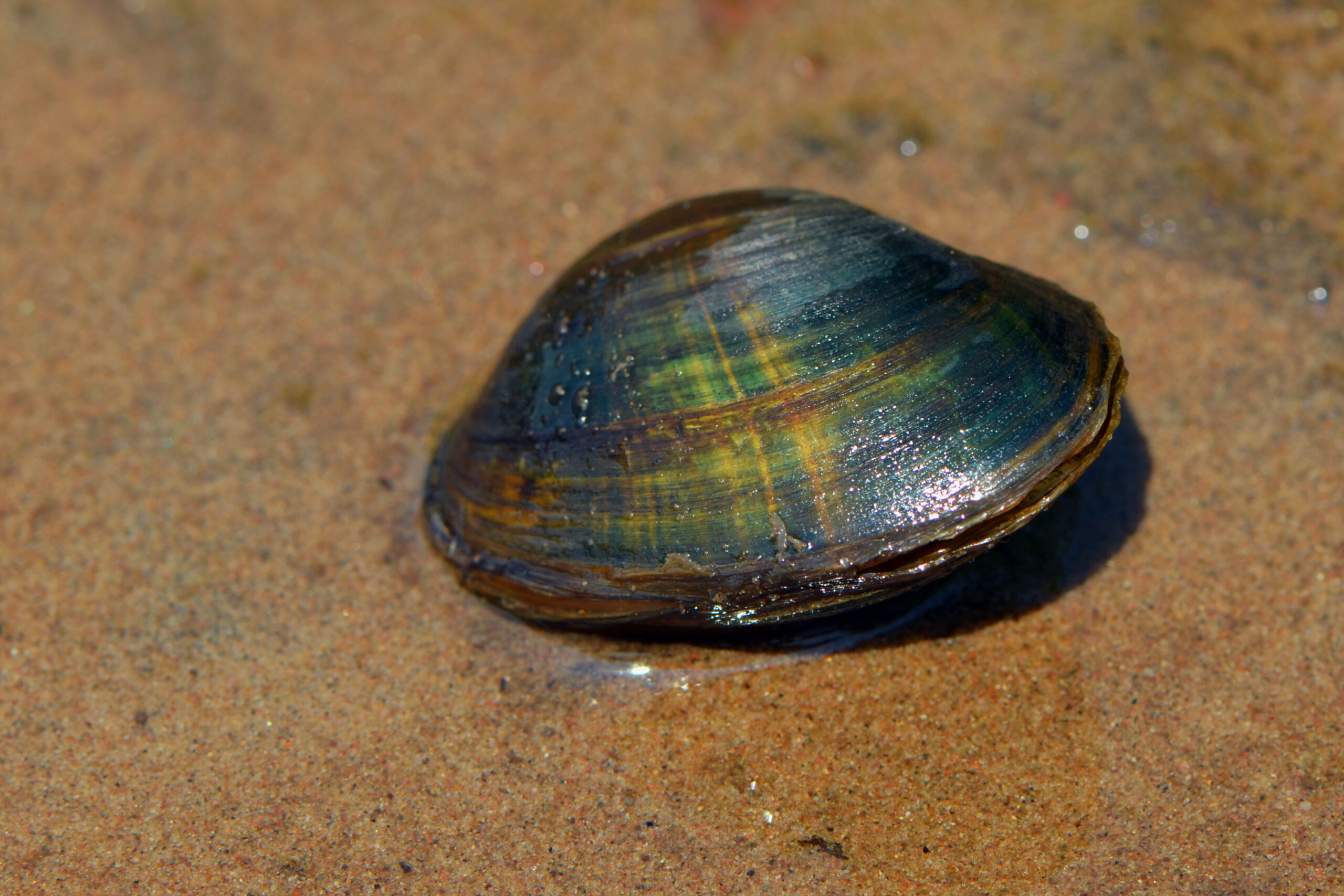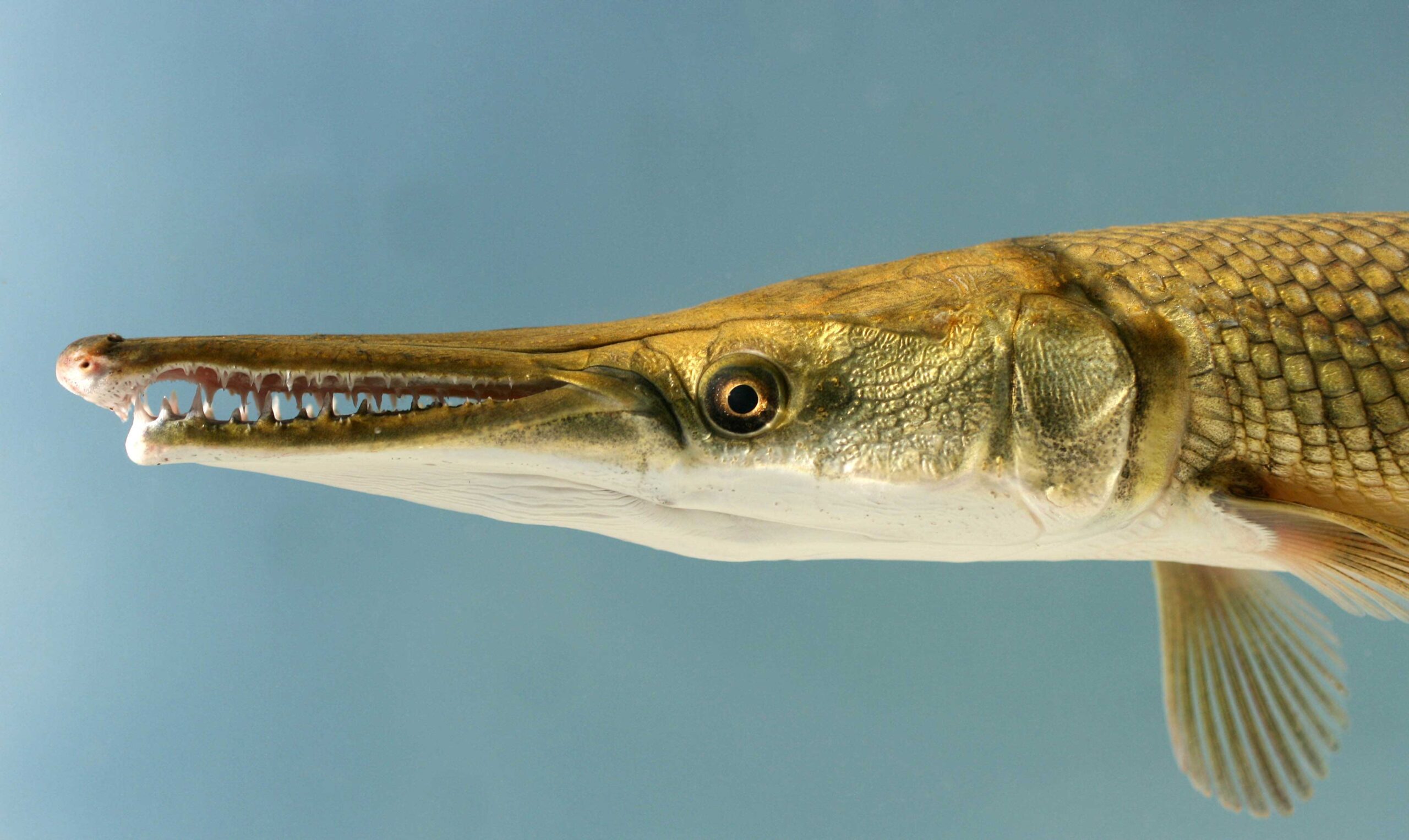We have much more to do and your continued support is needed now more than ever.
School of Fish
"What kind of a sick school is this?" -Jack Black

Fall is back-to-school time, and what better way to celebrate than to learn about species of fish you may (or may not) have heard of? The famous movie School of Rock taught us about each individual’s importance in making the band complete. Now it’s time to rock out by learning new underwater species that make our oceans, rivers, and lakes complete. From the mussels that protect our oceans to the fish that keep our rivers and lakes flowing, it takes all of these species to complete nature’s band.
Black Sea Bass | Bass Player
Who remembers the classic wall-mounted Big Mouth Billy Bass belting out “Take Me to the River”? Black sea bass are an important species to the mid-Atlantic ecosystem and quite the catch for fishers. They are extremely aggressive predators, weighing up to nine pounds and growing up to two feet long. They primarily eat crabs, shrimp, and other small invertebrates, and in turn, become prey for larger species, such as summer flounder and coastal sharks.
However, one of the most interesting abilities of black sea bass isn’t an ability to hold a tune or get groovy; it’s the fact that they are protogynous hermaphrodites, meaning they are all born female and later change to males as they grow. This feat typically occurs in the fall and winter months after the spawning seasons.

Black Jack | Lead Singer
Black jacks are large saltwater fish found in the Southern Pacific Ocean off our western coast, around Hawaii, and in the warmer waters of the Atlantic around the Gulf. Weighing up to 24 pounds and reaching two to three feet long, black jacks are carnivorous and enjoy the deeper, darker waters of the ocean. As Dewey, Jack Black’s character in School of Rock, sings: “Well, you’re not hardcore unless you live hardcore!”
And also like Dewey, black jack fish make their own kind of music, creating croaking sounds by grinding their teeth while releasing gas from their air bladders. Now that’s rock ‘n roll!

Sheepshead Fish | Piano Player
The sheepshead fish is a mostly marine species located along the eastern coastline of the Americas. They can be adaptable, though, and will swim to the warmer freshwater mouths of rivers and streams in the winter, like a virtuoso pianist who can switch things up and rock out on a keyboard.
While their scales are black and white striped, mirroring the white and black musical scales on a piano, this pattern isn’t their most distinctive feature… Sheepshead fish have a mouth full of human-looking teeth! These actually help them eat hard-shelled prey like mollusks and barnacles.

Black-and-Yellow Rockfish | Band Manager
The black-and-yellow rockfish is found in rocky nearshore areas and kelp beds off the coast of California. They are territorial, bottom-dwelling fish that typically live alone (unless they find the right bandmates). Their diet consists of small crabs, shrimp, fish, and cephalopods (much like road trip snacks on the band bus). With similar coloring and shape size as groupers, be sure not to mistake them for groupies!
They are primitively viviparous, meaning fertilization of eggs and embryo development occur internally, and some nutrients are provided to the developing young by the mother, followed by live birth of larval fish. In the wise words of Jack Black, “I service society by rocking, ok?” Rockfish do just that, with anglers, seabirds, and marine mammals constantly testing their will to rock on. While they may be small, their dorsal fin spines are venomous and can cause a painful sting, so the next time you hear Wiz Khalifa’s song, “Black and Yellow,” remember them!

Mussels | Band Security
Freshwater mussels provide the kind of muscle needed to stabilize manic concert crowds, the same way they underpin almost the entire aquatic ecosystem. You can trust this group of marine creatures to filter out crazed fans before they wreak havoc backstage, while also filtering toxins from the water. The duality of bivalves!
Mussels are a type of bivalve mollusk, meaning they feature a two-part shell connected by a hinge in the back. As filter feeders, mussels take in the water around them and filter out small bits of food, helping to keep aquatic ecosystems clean and nutrient-balanced. Did you know one mussel can filter between eight and 15 gallons of water per day? Now that’s some heavy lifting.
Built favorably for rockstar life, you can tell mussels apart from other mollusks by their shells. Mussels are typically blue or black, with an iridescent sheen that stands out under stage lights. If you’re looking for a safe and rockin’ time, freshwater mussels are sure to deliver in the water and at the concert venue!

Trumpetfish | Trumpet Player
Trumpetfish may be poor swimmers, but use their unique camouflage skills to stalk and catch prey. Trumpetfish can usually grow to between 24 and 36 inches long and feed mainly on other fish. Don’t let that long, narrow snout fool you—elastic tissue allows a trumpetfish’s mouth to open as wide as, or even wider than, its own body.
Their ability to camouflage comes in handy for hunting, but also for love. That’s right, trumpetfish use their camouflage for elaborate mating rituals that involve dances and changes in coloration to attract potential partners. What a catch!

Alligator Gar | Guitar Player
The alligator g(uit)ar is an ancient species of fish—these prehistoric paddlers have existed for over 100 million years. Of the seven known species of gars, alligator gar are the largest. The biggest alligator gar recorded was almost 10 feet long and weighed over 300 pounds. Now that’s a Reel Big Fish!
While the guitarists of our band can look intimidating due to their large size and sharp teeth (a double whammy!), don’t fret—there have not been documented attacks on humans. However, alligator gar eggs are poisonous. These fish are also long-lived, with females sometimes surviving to be over 50 years old.
Just like real guitarists on tour, the alligator gar can have a pretty busy life on the road, traveling up to 40 miles in a single week. While alligator gars prefer freshwater, they can also tolerate saltwater. Gars can breathe air and survive above water for up to two hours!

Red Drum | Band Drummer
Redrum…Redrum… No, red drum! Red drums were born to rock, as they were named for the drumming sound created with their swim bladder and abdominal muscles. Male fish make this noise during spawning season in order to attract mates.
Red drums are found near shore, and are a popular recreational gamefish off the east coast of North America. Red drums go with the flow—they can tolerate a wide range of habitats, water temperatures, and water salinity.
Almost always, red drums have one or more distinctive black spots near their tails. When feeding in shallow waters, they can exhibit a phenomenon called “tailing,” where their heads are down while they eat and their tails stick up out of the water.























